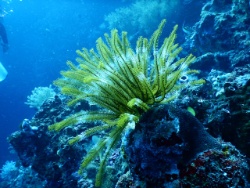Universities launch new report card on western Sydney
For the first time, the Universities of Sydney and Western Sydney have produced a report card and joint vision for western Sydney that reveals how the region can become one of the state’s most important incubators for future jobs and higher education.
Launching the vision this morning for the Greater Parramatta and Olympic Peninsula (GPOP) – linking Parramatta-Westmead and the Aerotropolis – the Vice-Chancellors were joined by Minister for Jobs, Investment, Tourism and Western Sydney Stuart Ayres MP, the Greater Sydney Commission and the Western Sydney Business Chamber.
Both universities commissioned the report card to identify how the region is faring and how best to leverage the area’s expected population boom with jobs, innovation and transport. Over the next 30 years, the largest population increases in NSW will be seen in western Sydney.
Highlights include:
• More than $10 billion in public and private
investment expected to be delivered within the GPOP area in
the next 5 to 10 years;
• Parramatta is forecast to
almost double its economic growth rate to 4.6 per cent in
the next three years – that’s 70 per cent more forecast
population growth than the Eastern Harbour City;
• GPOP
is experiencing a 7.1 per cent increase in the proportion of
tertiary qualification holders since 2011. This far
outstrips the rest of Sydney (3.4 per cent), NSW (3.0 per
cent) or Australia (4.3 per cent). This trend is
particularly visible in Westmead, where there has been an
8.6 per cent increase in tertiary qualification
holders;
• The Westmead Health and Education Precinct
is attracting globally competitive talent and jobs. This
precinct alone currently produces $1.9 billion of economic
output, expected to increase to $2.8 billion by 2036.
The report card notes that while the growth of the region is impressive there are issues that need to be addressed included the need for more local infrastructure and active transport, better collaboration between all three levels of government and industry and a renewed focus on commercialisation to attract and engage a wider range of private companies.
University of Sydney Vice-Chancellor and Principal, Dr Michael Spence AC, said there was no doubt that greater western Sydney held great promise as an innovation district.
“Western Sydney is a place that’s already producing world-leading scientists, research and successful collaborations with industry so it’s no coincidence that we’re investing $500 million to establish our second major campus at Parramatta-Westmead. This will be a place where our students and researchers will use automation and innovation to solve real world problems and where the jobs of the future will be created,” Dr Spence said.
Western Sydney University Vice-Chancellor and President, Professor Barney Glover AO, said that for more than 30 years, Western Sydney University had been committed to transforming the region through world-class research and teaching.
“This region-shaping alliance with the University of Sydney leverages the strengths of both institutions, delivering the higher education, economic and employment opportunities that an area of this significance deserves,” said Professor Glover.
David Borger, Executive Director of the Western Sydney Business Chamber said the delivery of major transport infrastructure such as Sydney Metro West and Parramatta Light Rail Stage 2 was crucial to the GPOP region reaching its full potential.
“These two major universities have made significant investments in the educational future of greater western Sydney but the full potential of our people will only be unlocked with better connectivity to job centres through projects such as Sydney Metro West and Parramatta Light Rail Stage 2,” he concluded.
Report Card – Highlights:
BIG-TICKET ITEMS ON
TRACK
Transport infrastructure:
benefitting from significant investments of the NSW
Government.
Economic fundamentals: are strong, as
more organisations and businesses move to GPOP, and
developers and planners seek to enable them.
AREAS FOR IMPROVEMENT, NOT MAJOR
INVESTMENTS
Local built infrastructure:
needs more walkable precincts and active transport
corridors. Does not yet effectively cater for start-up
communities.
Amenity and quality of life: more
work required to ensure that the region attracts and retains
talent.
Collaboration and governance: if improved
across the whole of GPOP, could provide a shared vision for
the future, supporting business attraction.
Research
and development: although strong and growing, more needs
to be done to strengthen commercialisation, requiring new
approaches to attract and engage a wider range of private
companies.
The scorecard also found that skill formation
in GPOP is strong, based on the significant investments from
the University of Sydney and Western Sydney University.


 East West Center: NZ Deputy Prime Minister Recounts Longstanding US-NZ Relationship In The Pacific
East West Center: NZ Deputy Prime Minister Recounts Longstanding US-NZ Relationship In The Pacific Global Jews for Palestine: Jewish Organisations' Passover Statement, After 40 Days Of Starvation
Global Jews for Palestine: Jewish Organisations' Passover Statement, After 40 Days Of Starvation APEC: Stronger Immunization Policies Needed As Vaccine Confidence Falls
APEC: Stronger Immunization Policies Needed As Vaccine Confidence Falls 350.org: Indigenous Groups From The Pacific, Brazil & Canada Hand Demands To COP30 Presidency To End Fossil Fuels
350.org: Indigenous Groups From The Pacific, Brazil & Canada Hand Demands To COP30 Presidency To End Fossil Fuels Conservation International: Conservation International Expedition Reveals Ecosystem Recovery In Tokelau
Conservation International: Conservation International Expedition Reveals Ecosystem Recovery In Tokelau UN Special Procedures - Human Rights: UN Expert Urges States To Finance Inclusive And Sustainable Development, Not A War Economy
UN Special Procedures - Human Rights: UN Expert Urges States To Finance Inclusive And Sustainable Development, Not A War Economy